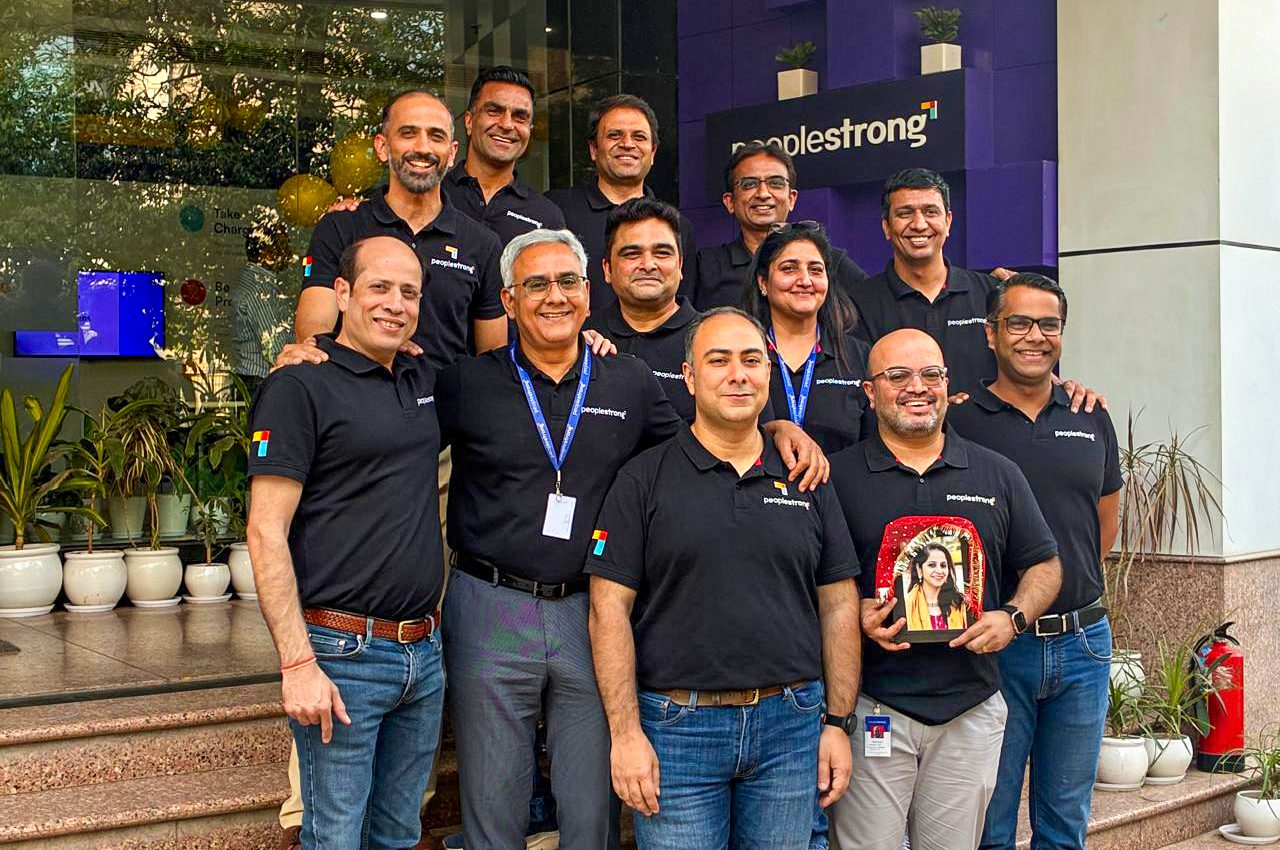Since the shift in our work habits, there has been a discernible change in human resource teams. Rather than solely concentrating on attrition rates and dollars and cents, HR teams are now starting to appreciate employee health and wellness.
One of the most important measures that can assist us in comprehending this more effectively is employee satisfaction—the cornerstone of a successful workplace. Employees who are made to feel valued and engaged will be inclined to remain productive, committed, and even stay within the business for an extended duration.
As per Gallup’s research, worker satisfaction decreases absenteeism by 78% and can lead to an 18% boost in productivity. This reflects the direct relationship of worker satisfaction with business success. So, how does your company improve worker satisfaction and create a successful workplace where workers are engaged and satisfied?
What is Employee Satisfaction?
Employee satisfaction refers to how content and fulfilled employees feel in their jobs. Various factors influence it, including workplace culture, compensation, career growth opportunities, work-life balance, and overall job security.
Employee satisfaction is very important not only for human resource departments but also for general management and productivity because:
- Boosts Retention & Reduces Turnover: When employees are satisfied, they are less likely to look for new job opportunities elsewhere. A SHRM study found that organizations with high job satisfaction see 68% lower turnover rates.
- Enhances Productivity & Performance: Happy employees are more productive, as they tend to be more engaged in their tasks and produce higher-quality work.
- Improves Workplace Morale & Culture: A positive work environment fosters collaboration, trust, and overall job satisfaction, making it easier to attract and retain top talent.
- Drives Business Success: Companies with satisfied employees experience better customer service, increased innovation, and higher profitability.
Thus, understanding and prioritizing employee satisfaction is essential for creating a positive and productive work environment where employees feel valued and motivated. It’s about ensuring employees feel their contributions are appreciated, their needs are met, and they have opportunities for growth and development.
10 Proven Ways to Improve Employee Satisfaction
Now that we are aware of employee satisfaction and why it matters, let us learn 10 successful ways of creating the workplace more satisfying and engaging.
1. Foster a Positive Work Culture
The very first thing that will influence your employee satisfaction is your workplace culture and work environment. 94% of executives and 88% of employees identified company culture as the most influential driver of their attitude towards the job and company. If the culture is toxic or disengaging, no amount of perk can ever compensate for it.
In order to set the right tone for your workplace culture, make sure:
Your Leadership Team Defines Culture
Leaders must lead by example in how employees ought to act and relate to one another. They also define the values and mission of the company, which inform decision-making and action. When leaders focus on a positive work environment, it communicates to employees clearly that their welfare matters.
You Focus On Teamwork, Diversity, & Transparency
Teamwork, diversity, and transparency are essential components of a positive work culture. Teamwork encourages collaboration and communication, while diversity brings different perspectives and ideas to the table. Transparency builds trust and accountability, ensuring that employees feel informed and involved in the company’s decisions.
2. Offer Competitive Compensation and Benefits
Another determining aspect of employee satisfaction is equitable pay and compensation.
Equitable Pay
The right salary structure establishes the base for hiring best talent, while compensation decides whether they will remain in your business for a longer period. Make sure it is tied to the employee’s skill, experience, and value added to the company while maintaining an unbiased process to decide compensation.
Employee Compensation
Compensations should also cover other advantages, including health coverage, retirement savings, wellness programs, mental health care, and parental leave. Non-monetary benefits such as additional vacation time or student loan repayment can also play a big part.
Providing these benefits shows that the business cares about the well-being of its employees and realizes how vital a balanced work-life is.
3. Recognize and Reward Employee Efforts
Workplace recognition is a strong driver for employees, besides salaries and bonuses. When hard work by the workers is not appreciated, they become disengaged fast.
According to research, 69% of employees would work more diligently if their work was valued and recognized, highlighting the need for just a “thank you” from the leadership team for excellent work.
To really appreciate and recognize your employees, you need to:
Use Bonuses and Public Appreciation to Boost Morale
There are many ways to reward employee contributions, ranging from financial incentives such as bonuses and raises to non-financial recognition in the form of public acknowledgment, awards, and promotions. Making recognition personalized can make it even more special.
Give Personalized Perks
Individualized rewards show that the firm cares about and appreciates each worker. This may involve giving personalized gifts, offering career advancement opportunities, or offering flexible schedules.
4. Provide Career Growth and Development Opportunities
All employees desire to work in a company with a good growth path, and employee growth programs assist them to do so.
Workers desire to feel they are learning and progressing in their profession. Organizations can leverage this feeling by giving workers opportunities for professional growth to keep them engaged and motivated.
This can be:
Mentorship and Upskilling Opportunities
Training programs, workshops, and mentorship opportunities help employees develop new skills and advance in their careers. These opportunities show that the company is invested in its employees’ growth and development.
Active Career Advancement Advice
Staff are likely to remain in an organization if they perceive chances for career progression. Utilize the leadership and HR team to develop new leaders who will guide staff to find growth opportunities and promotion within their current positions.
Ongoing Learning through Incentives
Offer assistance through partial or full funding for employees to take new courses or upskilling certifications in order to keep them relevant and competitive. This also shows that the company respects lifelong learning and professional development.
5. Ensure Open and Transparent Communication
Communication is the lifeblood of any successful organization. Employees want to know what’s happening in the company, how their work contributes to bigger goals, and how they can improve. Unfortunately, most companies never communicate such insights to their team, often making them feel neglected.
To do this, leaders need to listen carefully to the concerns of employees and provide plain language in the form of personal interviews, town hall meetings, or anonymous feedback surveys. Two-way communication fosters confidence and participation and makes workers feel that they are being heard in the organization.
Emphasizing openness in business decisions and sharing them with the team promotes open working culture and also avoids rumors or misinformation from demotivating the team.
6. Promote Work-Life Balance
The era of “hustle culture” is waning, and following the pandemic, the majority of employees no longer view overworking as something to be proud of. Rather, they desire good boundaries between work and life.
Employers can support this by offering flexible work arrangements, remote work options, and reasonable workloads. Encouraging employees to take their vacations, setting realistic deadlines, and respecting personal time outside of work hours all contribute to a more balanced and satisfied workforce.
Read our detailed guide on how to design OKR for a successful organizational culture and productivity: https://www.peoplestrong.com/blog/okr-design-patterns-for-successful-implementation/
7. Empower Employees with Autonomy
Micromanagement is one of the quickest ways to kill motivation. Employees thrive when they feel trusted to make decisions and take ownership of their work. To encourage personal ownership and enable your team members to take charge of their jobs, ensure that:
Give Employees Control Over Their Tasks and Schedules
Let your employees decide how they want to work so that they can choose the option best fit for their unique preferences. This may involve flexible work schedules, remote work options, and the flexibility to choose the role and projects they want to work on.
Empower Employees to Make Decisions
Delegate decisions to employees regarding their work. This demonstrates that you respect their judgment and experience, and it can result in greater ownership and responsibility.
Provide Opportunities for Skill Development and Growth
Support your staff to gain new skills and scale up in their careers. This can involve training programs, workshops, and mentorship schemes.
8. Improve Workplace Environment and Resources
Your physical and digital work environment also majorly affects employee satisfaction.
A well-lit, comfortable office with ergonomic furniture, breakout spaces, and quiet zones can improve focus and productivity.
On the digital side, employees need modern tools and technology that make their jobs easier. Providing the right resources, training, and budget to adapt these technologies ensures employees can work efficiently without unnecessary stress.
9. Encourage Team Building and Social Connections
People don’t just work for companies—they work for people. Strong workplace relationships lead to greater job satisfaction, improved collaboration, and a sense of community.
Companies should create opportunities for team bonding through social events, retreats, or simple coffee catch-ups. This allows cross-functional teams and individuals to network, connect, and discuss ideas in a safe space.
When employees feel connected to their colleagues, they are more engaged and less likely to leave the company.
10. Conduct Regular Employee Satisfaction Surveys
Lastly, worker satisfaction is more than a game of guesswork. You have to be certain that your plans and initiatives are actually having an impact.
To this end, you should be monitoring metrics consistently and gathering staff feedback through:
- Employee Pulse Surveys & Feedback: Use surveys to gauge employee satisfaction, morale, and overall happiness.
- Anonymous Feedback Opportunities: Provide channels for employees to share feedback anonymously, ensuring they feel safe expressing their true feelings.
- Regular Conversations: Hold regular, honest conversations with employees to understand their needs and concerns.
- Monitor Key Metrics: Track metrics like employee performance, absenteeism, and customer satisfaction to identify potential issues and areas for improvement.
If employees can see that their feedback creates actual improvements, they feel heard and appreciated.
Make Employee Satisfaction the Key Driver of Your Company Success
While most organizations view employee satisfaction as a necessary task, you can turn it to focus on workplace productivity and retention. A workplace where employees feel valued, motivated, and supported encourages innovation, enhances collaboration, and drives long-term success.
By implementing these 10 proven strategies, organizations can create an environment where employees thrive. These strategies include promoting a positive work culture, offering competitive benefits, encouraging career growth, and conducting regular surveys.
But enhancing the satisfaction of employees is not a one-off task. It is all about continuous listening, adjusting, and investing in the culture of the workplace. Organizations proactively soliciting and responding to feedback will be the employers of choice, attracting the best talent in the job market.
Ready to boost employee satisfaction? Start taking the right steps today with PeopleStrong’s Talent Management Software! From engagement surveys to performance management, our AI-powered platform helps organizations measure and enhance employee satisfaction seamlessly.
Get in touch today to schedule a quick demo!
FAQs
What can companies do to increase employee satisfaction?
Companies can boost employee satisfaction by creating a positive work culture, offering competitive compensation and benefits, recognizing and rewarding employees, providing career development opportunities, and ensuring open communication.
What are the five components of employee job satisfaction?
While factors vary, the key components of employee job satisfaction often include compensation, work-life balance, career development, relationships with colleagues, and the overall work environment.
How can companies measure employee satisfaction?
Organizations can measure satisfaction through employee engagement surveys, one-on-one feedback sessions, exit interviews, and key HR metrics like turnover rates and employee Net Promoter Scores (NPS).
Can flexible work arrangements improve employee satisfaction?
Yes, flexible work arrangements such as remote work, hybrid models, and flexible hours are shown to significantly improve employee satisfaction. They help reduce stress, improve work-life balance, and empower employees to be more productive in their preferred environment.
What do employees value the most?
Although the answer depends on individual employee needs and preferences, the general consensus is that employees most value factors like fair compensation, recognition for their work, opportunities for growth and development, and a positive work environment.













